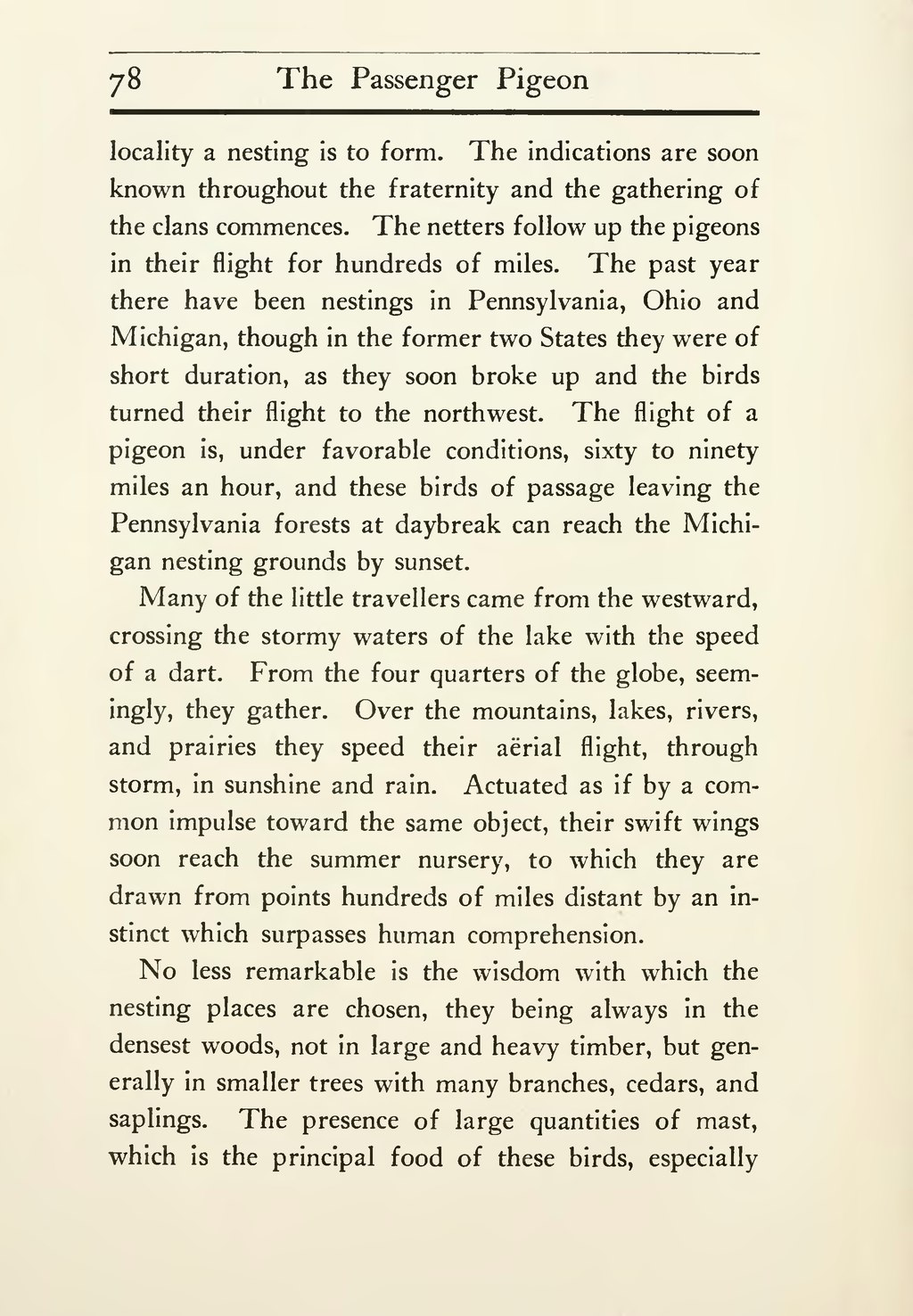locality a nesting is to form. The indications are soon known throughout the fraternity and the gathering of the clans commences. The netters follow up the pigeons in their flight for hundreds of miles. The past year there have been nestings in Pennsylvania, Ohio and Michigan, though in the former two States they were of short duration, as they soon broke up and the birds turned their flight to the northwest. The flight of a pigeon is, under favorable conditions, sixty to ninety miles an hour, and these birds of passage leaving the Pennsylvania forests at daybreak can reach the Michigan nesting grounds by sunset.
Many of the little travellers came from the westward, crossing the stormy waters of the lake with the speed of a dart. From the four quarters of the globe, seemingly, they gather. Over the mountains, lakes, rivers, and prairies they speed their aerial flight, through storm, in sunshine and rain. Actuated as if by a common impulse toward the same object, their swift wings soon reach the summer nursery, to which they are drawn from points hundreds of miles distant by an instinct which surpasses human comprehension.
No less remarkable is the wisdom with which the nesting places are chosen, they being always in the densest woods, not in large and heavy timber, but generally in smaller trees with many branches, cedars, and saplings. The presence of large quantities of mast, which is the principal food of these birds, especially

